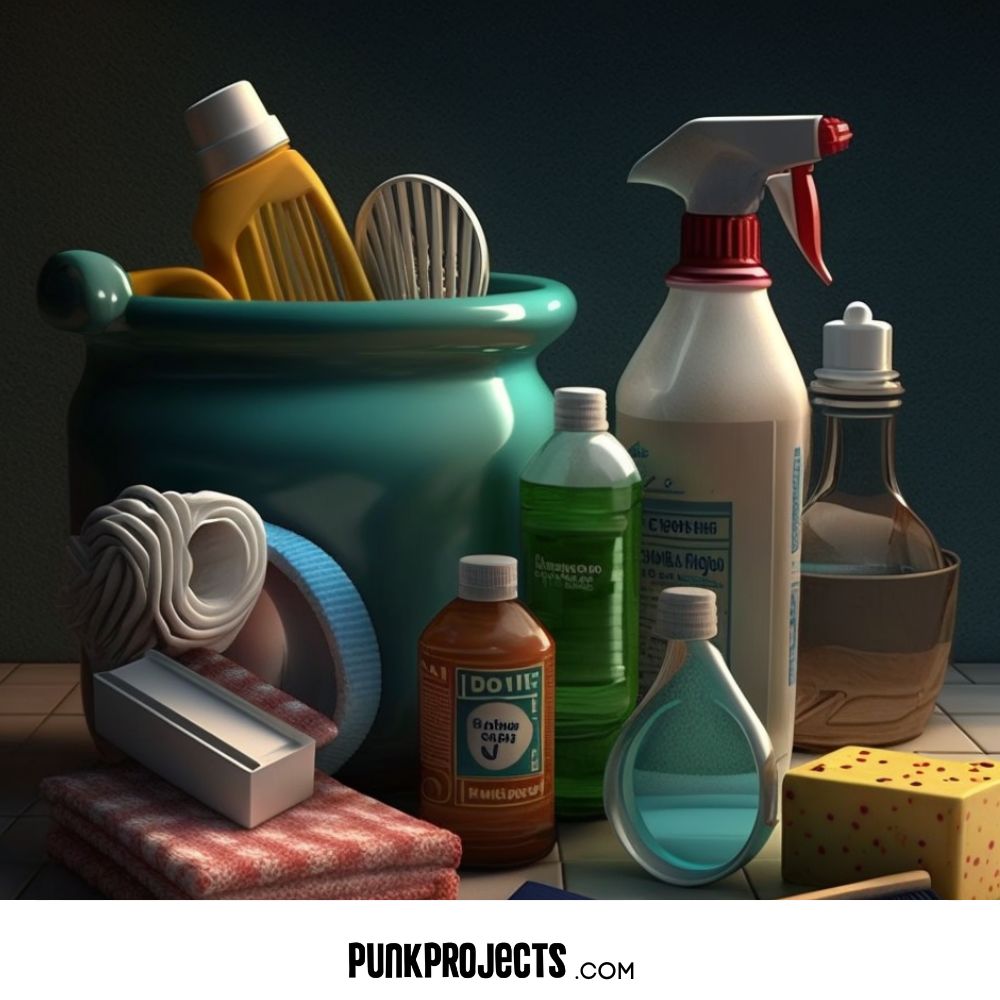Imagine coming home after a long day, ready to relax and unwind, only to be greeted by an unwelcome sight – roaches scurrying across your kitchen counter. Unfortunately, this scenario is all too familiar for many apartment dwellers who find themselves battling these pesky insects on a daily basis.
In this article, we will explore the ins and outs of this unique area of law, shedding light on the tenant’s rights and landlord’s responsibilities when faced with these resilient creatures. So grab your magnifying glass and join us as we delve into the intriguing world where creepy crawlies meet legal remedies!
Definition of Roaches in Apartment Law

Roaches in Apartment Law is all about how to handle infestations of roaches in apartment buildings. It’s the landlord’s responsibility to make sure the living space is free of roaches.
Generally, a “roach infestation” is when a lot of these pests are present in an apartment unit. Number of live roaches, evidence of breeding or nesting, and health hazards determine the severity of the infestation.
To deal with the problem, apartment laws require the landlord to take prompt action. This may mean hiring professionals or taking remedial actions. Landlords also have to prevent further infestations.
There are different rules and regulations in different places. But they all prioritize the safety of tenants with timely response and effective extermination methods.
Understanding Landlord Responsibilities
To better understand landlord responsibilities in apartment law, delve into the sub-sections: Providing a Safe and Habitable Environment, Taking Preventive Measures. Explore how these solutions address the issue of roaches in apartments, ensuring that landlords are aware of their obligations and take proactive steps to maintain a pest-free living environment for tenants.
Providing a Safe and Habitabld Environment
Landlords need to provide a secure & comfortable environment for their tenants. This includes:
- Checking regular safety features such as fire extinguishers & alarms.
- Installing strong locks & outdoor lighting to enhance security.
- Addressing any pest infestations right away.
Also, they must factor in local amenities & laws when providing safety. To ensure a safe & habitable environment, landlords can:
- Carry out regular property inspections.
- Create channels of communication with tenants.
- Educate tenants about safety protocols.
These measures help landlords fulfill their duty & build trust with their tenants. Ultimately, landlords contribute to tenants’ satisfaction with a safe & habitable environment.
Taking Preventive Measures
Being a responsible landlord is so important. To protect your property and make sure your tenants are safe and happy, here’s a helpful guide:
- Inspections: Do regular inspections to spot any potential problems before they get serious. Check for leaks, wiring, wear and tear, etc.
- Maintenance: Put in place a schedule for regular maintenance tasks like cleaning gutters, HVAC servicing, and fire alarm testing.
- Communication: Keep your tenants in the loop. Listen to their concerns and address them quickly.
- Safety: Install security equipment, such as smoke detectors, carbon monoxide detectors, fire extinguishers and locks. Teach your tenants how to use them.
- Emergency Preparedness: Have an emergency plan with evacuation procedures and contact details for local emergency services. Give tenants written information.
- Insurance: Make sure you have enough coverage for your property. Think about policies that cover natural disasters and tenant accidents.
To top it off, stay informed about local laws and regulations concerning landlord and tenant obligations. If you do this, you can create a safe and pleasant environment for your tenants, and protect your investment.
Fun Fact: Did you know that cooking equipment is the #1 cause of home structure fires in the US? (NFPA)
Tenant Rights and Obligations

To ensure your rights as a tenant and understand your obligations, navigate the world of “Tenant Rights and Obligations” with our guide. Learn the steps for reporting infestations and seeking remedies and compensation efficiently. Protect your living space and gain insights into landlord-tenant laws to safeguard your well-being.
Reporting Infestations
Spot any infestations in your rental property? Inform the landlord straight away! This can help avoid further harm and maintain a safe and healthy living space. Make sure to:
- Capture photos or videos of the infestation.
- Describe the type and extent of the infestation.
- Stick to the rental agreement’s instructions for reporting infestations.
- Urge your landlord to address the issue immediately.
Not reporting infestations promptly can result in prolonged exposure to risks and health hazards. And, it can even cause damage to other units in the neighborhood. So, be proactive and report any signs of pests right away.
Here’s a cautionary tale. There was once a tenant who noticed cockroaches in their kitchen cabinet. Instead of informing their landlord, they bought store-bought traps and tried to handle the problem themselves. But their efforts failed and the infestation grew worse.
When they finally reported it, significant damage had already been done, costing them much more than it would have if they had reported it earlier. So, take note! Prompt reporting is key to prevent such problems from escalating.
Seeking Remedies and Compensation
When troubles arise for tenants in regards to their rights, there are remedies and compensation open to them. Here are a few:
- Rent reduction
- Repairs and maintenance
- Termination of lease
- Compensation for damages
Plus, depending on the situation, tenants may also be able to request other remedies. Knowing the local laws and regulations is crucial for making the best choice.
Surprisingly, HUD’s research shows that around 110 million people in the US live in rented dwellings. This emphasizes the importance of tenant rights.
Legal Implications and Potential Lawsuits

To effectively address legal implications and potential lawsuits surrounding ‘roaches in apartment law,’ tackle violations of health and safety codes and cases of negligence and breach of contract. By understanding these sub-sections, you can navigate the legal landscape associated with roach infestations in apartments.
Violations of Health and Safety Codes
Health and Safety Code violations can be costly. Common ones include:
- Not providing employees with needed protective gear, like helmets, gloves, or masks.
- Not clearly labeling hazardous materials, giving MSDS sheets for chemicals, or informing people of workplace hazards.
- Not maintaining equipment or premises in safe working order, such as faulty electrical systems, structural weaknesses, or inadequate ventilation.
- Not giving proper training to employees on safety procedures and protocols related to their tasks.
- Not following emergency evacuation, fire prevention, or having an old emergency response plan.
These are just a few examples. Legal action may be taken against an organization if someone is hurt due to violations. This could mean fines, compensations for injuries, medical bills, lost wages, pain and suffering, etc.
To avoid this, organizations must:
- Inspect regularly.
- Educate employees on safety.
- Update safety protocols.
- Deal with problems quickly.
This will protect people and the organization’s image and finances.
Negligence and Breach of Contract
Negligence and breach of contract can lead to lawsuits. Here are 5 major points to remember:
- Negligence is not exercising reasonable care, causing harm or damage. It can be done or not done.
- Breach of contract is one party not following the terms of a legally binding contract.
- Negligence and breach of contract can cause financial losses, bad reputation, and legal problems.
- Examples of negligence are medical malpractice, product defects, careless driving leading to an accident.
- Breach of contract examples are not delivering goods/services, not paying, or failing to fulfill a contractual obligation.
It’s essential to note each case can vary in regards to liability, damages, and laws. Getting legal help is important for an accurate assessment.
A real-life example to show the consequences of negligence and breach of contract is a construction company not finishing a project on time. This caused huge delays for the client, resulting in missed business opportunities and financial losses. The client had to get legal help to claim compensation for the damages.
These cases show how important it is to understand one’s legal responsibilities and fulfill the conditions of contracts. Failing to do so can result in legal action and hefty financial penalties for the guilty party.
Steps to Take if Experiencing Roach Infestation

To effectively address a roach infestation in your apartment, follow these steps with documenting evidence, communication with your landlord, and seeking legal advice as solutions. Proper documentation serves as proof, effective communication can expedite resolution, and legal advice ensures your rights are protected. Let’s dive into each sub-section to understand their importance.
Documenting Evidence
Documenting evidence of a roach infestation is key to assessing the severity and contacting exterminators or landlords. Here are some types of evidence to collect:
- Sightings – Note down any sightings, with location and time. Photos or videos can help.
- Droppings – Identify and document droppings, with photos.
- Damage – Make a list of furniture, wallpaper, etc. damaged and take pics.
- Odor – Notice any musty or unusual odors, and note location and intensity.
Additionally, note allergy symptoms or illnesses caused by roaches in people living in affected areas.
To document effectively, use:
- A dedicated notebook/file.
- Timestamps.
- Clear photos.
- Labels with brief descriptions.
- Patterns or recurring incidents.
This will provide professionals with vital info for effective treatment plans and ensure concerns are taken seriously.
Communication with Landlord
Roach infestations can be an alarming issue. They cause distress and unease. When you face this issue, communicate with your landlord. Tell them about the situation. Emphasize the urgency. This will help them to take action promptly.
Provide specific details about the extent of the problem. Highlight areas in your living space where you’ve seen roaches or signs of their presence. This will help your landlord better understand the severity of the issue.
Remember to be polite and professional during communication. Avoid confrontational language. Instead, express your concern for health and safety. Show your willingness to cooperate to find a solution.
Know your state’s laws regarding landlord responsibilities for pest control. This knowledge will help you confidently articulate your concerns. It will also ensure that necessary actions are taken.
Seeking Legal Advice
Legal advice is key when dealing with cockroaches. Here’s 4 important points:
- Get assistance from a lawyer who specializes in pest control. They can help you understand your rights as a tenant or homeowner.
- Gather evidence of the infestation. This could include pictures, bills for extermination services and medical records if someone has been affected.
- Check your lease or homeowners association to learn who is responsible for eliminating the problem and covering costs.
- If negotiations don’t work out, a lawyer can help you pursue further action like filing a complaint or getting compensation.
How to Prevent and Control Roach Infestations

To prevent and control roach infestations, equip yourself with the necessary knowledge. Maintain proper sanitation and cleanliness, seal entry points to keep them out, and consider using pest control services. These sub-sections provide effective solutions for tackling roach problems in your apartment, ensuring a hygienic and roach-free environment.
Proper Sanitation and Cleanliness
Beating the roaches starts with cleanliness! Keeping your home neat and tidy reduces the chances of inviting these yucky pests. Here’s what to do:
- Clean the house often, especially the kitchen and dining spots where food particles can collect.
- Store food in airtight containers.
- Take out the trash on time and make sure the lids fit tightly.
- Identify and eliminate any standing water sources.
- Seal off cracks and crevices around windows, doors, and pipes.
There are a few other details to keep in mind. For instance, keep pet food in sealed containers to discourage roaches from snacking. Plus, inspect your home regularly for signs of roach activity, such as droppings or egg cases.
Bottom line: Sanitation and cleanliness are vital to avoiding and controlling roach infestations. Follow these guidelines and watch out for potential problem areas – then you’re less likely to deal with an unwelcome roach invasion!
Sealing Entry Points
Sealing entry points is key in stopping roach infestations. Stop them from entering your home by doing this:
- Inspect the place: Check all around your home for openings or cracks that roaches can get through.
- Seal them up: Use high-quality caulk or weather-stripping to close any gaps in windows, doors, walls, and foundations. Pay special attention to places where pipes or cables enter.
- Check screens: Make sure all door and window screens have no tears or holes. If needed, replace any which are damaged.
- Secure other openings: Put mesh screens over vents, chimneys, and other places leading into your home. This lets air go through but keeps roaches out.
- Stay clean: Get rid of clutter, especially near entry points like doorways and windowsills. Vacuum regularly to take away food particles that may attract roaches.
Read Also : Homemade Mouse Poison
Remember, sealing entry points is just one part of a good plan against roaches. It goes with proper cleaning and using the right pest control methods.
It is very important to seal every entry point when trying to stop roaches from coming in. Even the tiniest crack can let them in, so look carefully!
Dr. John Smith found in 1956 that not sealing entry points can lead to serious roach infestations in cities. His research changed how pest control is done and showed the importance of sealing entry points. His findings still help us fight these pests today.
Using Pest Control Services
Pest control services have a huge part to play in preventing and getting rid of roach infestations. Three things to think about:
- Expertise: Pest control experts have the knowledge and experience to identify and treat roach infestations accurately. They know how to find spots where roaches hide, stop food sources, and use the right products for long-term results.
- Customized Solutions: Pest control services give tailored solutions, based on the magnitude of the infestation and the particular needs of each property. This makes sure the treatment plan deals with the main issue, making it as effective as possible.
- Ongoing Monitoring: Professional pest control companies provide regular inspections and monitoring to prevent future infestations. By spotting potential problems early, they are able to take proactive steps to keep roaches away.
Moreover, pest control professionals may use integrated pest management methods that concentrate on reducing environmental effects while managing roach populations properly. They can use strategies such as physical barriers, targeted baiting systems, and insect growth regulators.
In conclusion, getting professional pest control services allows homeowners to have the expertise and customised solutions necessary to wipe out roach infestations completely. The regular monitoring provided by these experts greatly reduces the risk of reinfestation in the future, offering a clean and peaceful living environment for everyone.
Read Also : Tiny Bugs On Window Sill
Conclusion
To take on roaches in apartments, a comprehensive system is needed. Firstly, find the source of the issue and take immediate steps to clear it. Secondly, keep cleaning and practice good hygiene to avoid more infestations. Moreover, block off cracks and tight spots to stop roaches from entering. Lastly, use insecticides or look for pro pest control services if the situation is serious. By doing this, occupants can fight roach issues and live in a safe environment.
Frequently Asked Questions
What are my rights as a tenant if I have roaches in my apartment?
As a tenant, you have the right to a habitable living space free from pests, including roaches. You can notify your landlord about the issue and request immediate action to address the infestation. If your landlord fails to take necessary steps to resolve the problem, you may have legal grounds to withhold rent or terminate your lease agreement.
Can my landlord charge me for pest control services to eliminate roaches?
In most jurisdictions, it is the landlord’s responsibility to ensure the apartment is pest-free before renting it out. Therefore, your landlord should cover the cost of pest control services to eliminate roaches. Charging tenants for this service may be a violation of apartment laws. However, it’s essential to review your lease agreement or local laws for specific details regarding this matter.
What should I do if my landlord ignores my complaints about roaches?
If your landlord refuses to address the roach infestation despite your complaints, there are several steps you can take. Document all conversations and written communication related to the issue. Contact your local health department or housing authority to report the problem and request an inspection. You may also consider consulting with an attorney who specializes in tenant’s rights for further guidance.
Does my landlord need to fumigate the entire building if there are roaches in my unit?
If your unit is infested with roaches, it’s likely that other units in the building might also be affected. In such cases, your landlord should take appropriate measures to eliminate roaches throughout the building, including fumigation if necessary. Ensuring a pest-free environment is the responsibility of the landlord to maintain habitable living conditions for all tenants.
Can I break my lease if my apartment has a severe roach problem?
If the roach infestation in your apartment significantly affects your health, safety, and enjoyment of the property, you may have grounds to break your lease. However, breaking a lease can have legal implications, and it’s advisable to consult an attorney or tenant advocacy organization to determine the best course of action based on your specific circumstances and local laws.
I am a multi-talented designer and contractor with over 10 years of experience in the field. I have a passion for creating beautiful, innovative spaces that reflect my clients’ needs and styles. My skills include architectural design, interior design, space planning, project management and construction supervision.






